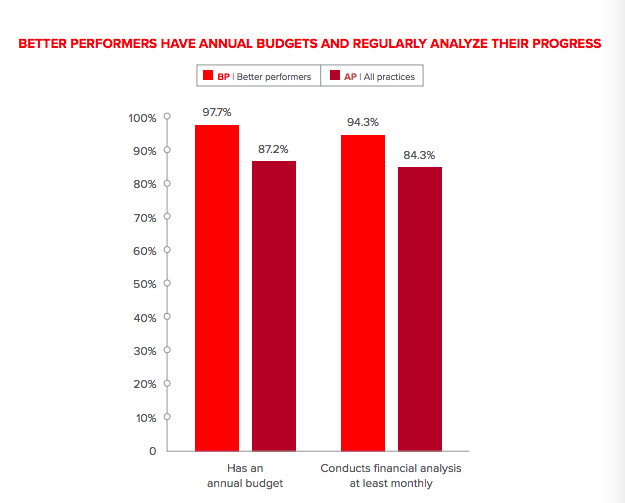Top 3 strategies of healthcare’s best performers
Thriving in the current healthcare environment is a struggle for organizations of all types and sizes, but there are a few key strategies the top performers agree are best for meeting the significant headwinds of the industry, according to a new report from the Medical Group Management Association (MGMA).
The best performers in healthcare “[Invest] in good people, good technology and good systems and ... maximize ROI on those investments,” Halee Fischer-Wright, MD, MMM, president and CEO of MGMA, told HealthExec. “The practices that do make these investments have higher productivity, lower operating costs, higher physician income and shorter patient wait times. Ultimately, sound business process delivers quality, value and satisfaction.”
While the best performers in these three categories—people, strategy and investments—fare better financially, they also see higher rates of engagement. MGMA evaluated 2,941 groups for its DataDive Better Performers report. Of these groups, 676 were considered better performers.
Engaged culture
Organizations large and small can struggle with sustaining an engaged culture. What’s more, they might not even have a pulse on how their culture is reflected. When asked if they were satisfied with their organization’s culture, respondents to MGMA’s poll were almost evenly split—52 percent responded “yes,” while 48 percent said “somewhat” or “no.”
Better financial performers in the report tended to put a higher premium on building an engaging, patient-focused culture.
“We’ve always associated ‘better performers’ with those who financially do well and are profitable, but it was interesting to see that these organizations care just as much about employee, patient and provider satisfaction and the organization’s culture,” Fischer-Wright said. “It’s a testament to an age where keeping not just the customer, but the employee happy, makes a huge difference.”
One specific example of what separates the top performers from the pack is how they approach provider and staff satisfaction surveys, conducting them more often and using the results to make changes. Those results are also shared throughout the organization, through staff office, management and senior leaders and board members.
“Transparency throughout the entire organization is key to success,” Fischer-Wright said. “Sharing the results with all levels within the organization, even with the Board of Directors, allows the entire staff to collaborate and create positive progress and improvement.”
Strategic process
Top performers are also consistently looking ahead with a clear strategic process. These leaders typically establish a vision, a strategy and goals, and they consistently revisit their strategy to make adjustments. That approach is the same for keeping up with shifts in the industry and meeting financial strategic goals. This means regularly analyzing progress toward annual budgets.
“Regularly monitoring performance against your strategic plan or budget and remaining open-minded to adjustments is a significant way to revamp your strategic process,” Fischer-Wright said. “Better performing organizations understand that lasting progress first starts with clear, focused efforts and investing in tools to accompany the vision.”

Investing in operations
With the mindset on goals, the best performers are also looking to constantly evaluate new investments that can boost operations even further. This approach is systematic, requiring investments in time, effort, resources, tools and information.
One of the biggest investment areas is technology, which can significantly help drive operation improvements. However, not all emerging technology is the same, which means organizations need to dedicate time to invest in the correct tools that can streamline operations, improve staff communications, boost patient engagement and compliance, and deliver the best insights.
Top 5 improvement efforts by best performers:
- Coding or documentation efficiency (61 percent)
- Billing and collections efficiency (58 percent)
- Analytics and reporting (55 percent)
- Benchmarking (46 percent)
- Employee training efforts (46 percent)
When healthcare organizations put all the pieces together, they not only do better financially, patients also benefit.
“Patients reap significant rewards as better performing organizations use purposeful approaches to improving the right things—whether it’s culture, strategy or operations—all of which directly impact the patient for a better, all-around experience,” Fischer-Wright said.

